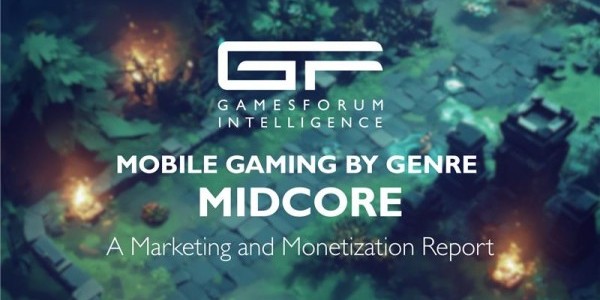Community Spotlight: Stan Minasov on How AppMagic is Transforming Market Intelligence in the Mobile Apps Industry

The mobile app industry is more competitive than ever, and access to accurate market intelligence can mean the difference between success and failure. AppMagic started as an internal tool for a gaming studio struggling with monetization and user acquisition decisions. Now, it’s a full-scale analytics platform that helps developers identify market trends, optimize LiveOps, and maximize revenue. VP of Product Stan Minasov discusses how AppMagic delivers data-driven insights that empower studios to make smarter, faster decisions.
Can you describe the journey and the vision behind AppMagic, and how it aims to transform market intelligence in the mobile apps industry?
Absolutely! AppMagic actually got its start inside a gaming studio — because, frankly, none of the existing market intel solutions were enough. We knew firsthand what it’s like to hit roadblocks in everything from monetization to scaling LiveOps, so we decided to build our own tool that could do it all. That in-house project quickly evolved into the most powerful and versatile market intelligence platform in the mobile apps industry.
Our vision has always been to create a one-stop shop that empowers developers and publishers to boost ROI and cut costs. Whether you’re researching a new market or fine-tuning a live game’s monetization strategy, AppMagic is designed to deliver fast, actionable insights — almost like magic!
We want our users to spend less time crunching numbers and more time making great apps. By reducing the gap between logging in and getting real, revenue-boosting data, we’re on a mission to transform how studios of all sizes approach market intelligence.
As VP of Product, you oversee both product and sales teams. How do you balance the interplay between these departments to drive product success?
Oh, that’s a tricky one! I like to think of our product and sales departments as dance partners, making sure they’re always in sync — minus the toe-stepping. On the sales side, the team needs a deep understanding of our product’s features and the specific use cases that matter to our customers. That way, they’re not just “selling” but really offering solutions that help clients grow.
Meanwhile, the product team keeps its finger on the pulse by gathering feedback from sales on what users love, what could be improved, and what features or data our customers are craving. This back-and-forth ensures we’re doubling down on what works and quickly iterating on what could be better.
What have been the most significant changes in mobile marketing trends over the past few years, and how has AppMagic adapted to these shifts?
There are several prominent trends we’ve witnessed. Over the past few years, the mobile landscape has shifted away from launching brand-new apps every month toward maximizing the potential of existing hits. Developers now focus on LiveOps and advanced monetization strategies rather than crossing their fingers for a blockbuster launch. At AppMagic, we’ve leaned into that trend by developing tools like our LiveOps Calendar and Monetization Intelligence, which boost revenue for already successful titles.
On the user acquisition side, with IDFA changes and rising CPIs, everyone’s scrambling to uncover better ad creatives and more cost-effective channels. That’s why we’ve enhanced our UA and ad intelligence features—to help our clients spot those hidden gems in their campaigns.
And of course, you can’t talk about recent trends without mentioning the surge in LLMs and chatbots. They’ve taken off so rapidly that we’ve carved out a dedicated category for them in our platform.
Could you share a particularly challenging moment in product development and how your team navigated it successfully?
A standout challenge for us was the launch of our new toolset focused on LiveOps, monetization, and gameplay deconstructions. We kept hearing, “There’s no way you can do that much deep analysis at scale and still highlight what really matters.” Even with hundreds of customer development interviews, tons of research, and all the usual careful planning, it still felt like a leap of faith. We questioned whether it would truly hit product-market fit and whether we could scale it to help hundreds of companies boost their revenue.
But we pushed forward — our conviction came from understanding developers’ pain points firsthand and knowing the difference this tool set could make. Once we rolled it out, user feedback validated that we were on the right track. People started seeing real ROI gains, and that was our signal that our faith wasn’t misplaced. It turned out to be our biggest product launch in recent years, proving that sometimes you’ve just got to trust your research, your team, and your instincts
Live operations are becoming increasingly essential in the mobile apps industry. How do you see these strategies influencing user engagement across different types of apps?
LiveOps strategies are fundamentally shifting the spotlight onto long-term engagement — because if you can keep people having fun and coming back regularly, monetization tends to follow naturally. We’re seeing increasingly elaborate LiveOps grids across all types of apps, with whole blocks of interconnected events, seasonal tie-ins, and special offers layered on top of each other. Holidays, for instance, have become prime opportunities: developers roll out unique themes or IPs, plan stacked events, and serve up deals that speak directly to their audience.
All of this variety isn’t just about throwing more at users. Oh no, it’s about hitting the sweet spot between novelty and consistency so that people feel continually invested. Different genres might leverage different strategies — say, a puzzle game could offer themed challenges, while an RPG runs expansive story events. But the ultimate goal remains the same: boosting user lifetime value by focusing on fun, retention, and then layering monetization techniques on top like the icing on a cake.
Transparency and agility are emphasized in your product development process. How do these values translate into actual practices within your teams?
There is a lot to mention, and I’m sure you’re not here for an hour story. But I’d say these four factors are the most important ones.
Full transparency on goals and progress. We make sure everyone on the team knows our overarching objectives — where we’re headed and how we plan to get there. This isn’t just about showing roadmaps; it’s about ensuring each person understands the ’why’ behind every decision.
Frequent syncs and open communication. We hold regular stand-ups and cross-team check-ins to let everyone share updates, challenges, and ideas. This not only keeps people in the loop but also fosters a culture of helping each other out when someone has a question or runs into an obstacle.
Constant focus on top priorities. We’re realistic: there’s never enough time to do absolutely everything. So we concentrate on the tasks that will drive the biggest impact, making sure our daily efforts match our long-term goals. We regularly check if our current path is leading us toward the results we want. If we spot a better way, we pivot — but only with clear reasoning.
Room to experiment (and sometimes fail). A big part of agility is letting the team try new ideas — especially if they might unlock faster growth or better processes. We encourage experimentation, celebrate learnings (even when an idea doesn’t pan out), and use that feedback to refine and improve.
Looking towards the future, what emerging technologies or trends do you believe will have the most significant impact on mobile app market intelligence?
I’m sure you already know the answer. LLMs and deep reasoning are here, and they set to revolutionize how we research market. Imagine an AI “analyst” already tuned into your goals, delivering immediate, actionable insights without all the guesswork. By transforming mountains of data into tailored strategies, these technologies free teams to focus on creativity and strategic thinking, fueling better decisions and faster growth. That’s one of the reasons we’ve been integrating LLM-based tools, both externally and internally, for over a year now.
Finally, what 'hint of magic' does AppMagic bring to its users, and how does it set itself apart in a competitive industry?
For us, that “magic” is the perfect blend of intuitive design and deep, data-driven insights. A perfect one-stop-shop for all your market intel needs. We’ve felt the same pain points our users have, so we built the analytics tool we wished we had — one that delivers actionable, revenue-boosting insights almost on command. It’s about taking something as complex as market data and turning it into a clear path forward. That’s what sets AppMagic apart: we give you the power to spot opportunities, scale LiveOps, and optimize monetization — without the heavy lifting, so you can focus on actually growing your business.










